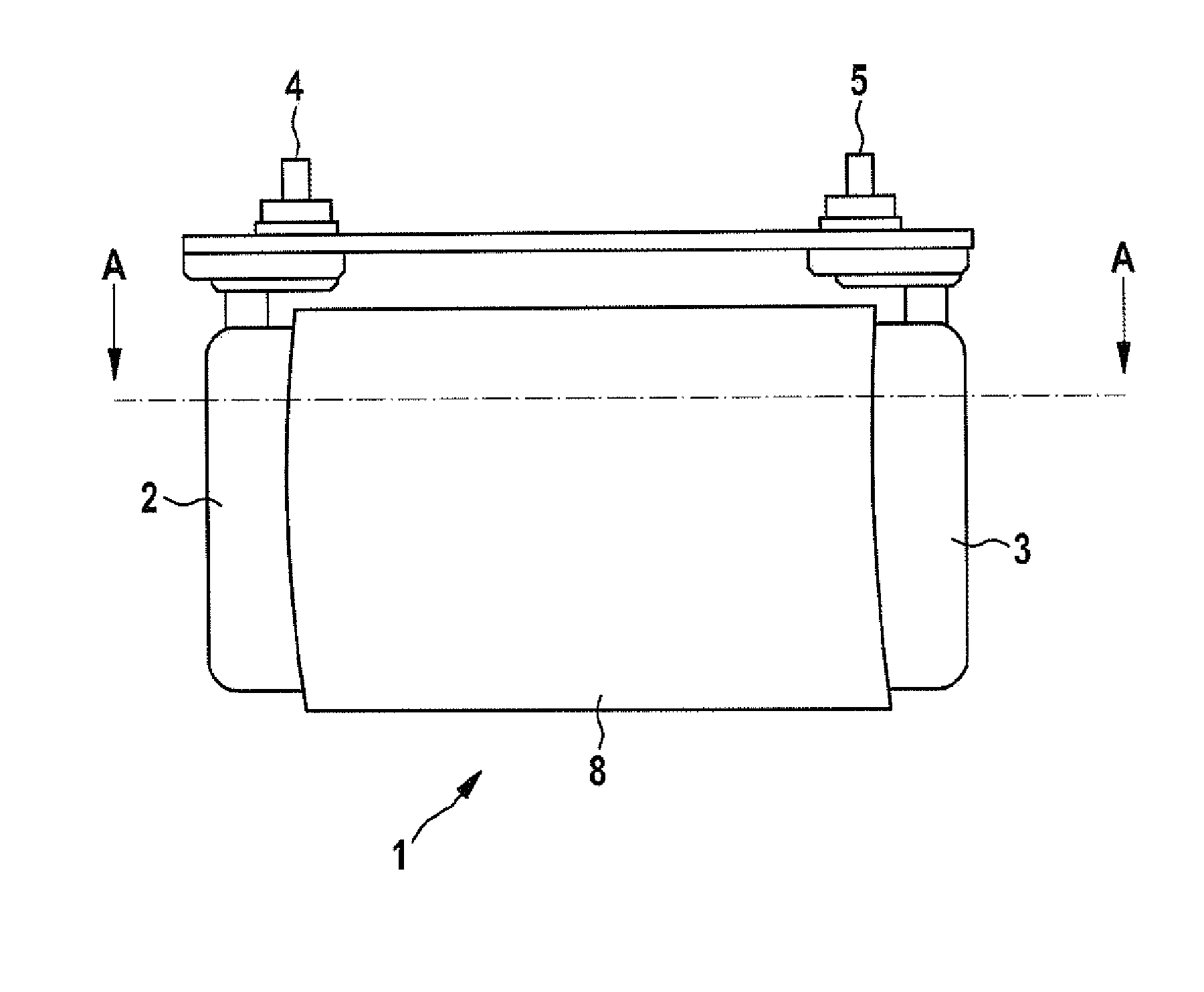Short-circuit detection apparatus for detecting short circuits of a battery cell and method for short-circuit detection
a short-circuit detection and battery cell technology, applied in the maintenance/service of primary cells, batteries, instruments, etc., can solve the problems of oxidizing elements, short-circuit detection, and sudden discharge of electrode sections, so as to reduce or interrupt the current through the battery cell, reduce the risk of explosion or fire, and reduce the risk of short-circuit
- Summary
- Abstract
- Description
- Claims
- Application Information
AI Technical Summary
Benefits of technology
Problems solved by technology
Method used
Image
Examples
Embodiment Construction
[0024]FIG. 1 schematically shows a view of a battery cell 1 embodied as a jelly roll. The battery cell 1 has external terminals 4 and 5 having different polarities. The external terminals 4 and 5 are respectively electrically connected to collectors 2 and 3 for the two electrodes of the battery cell 1. In this case, the collectors 2 and 3 project from a central part of the battery cell 1, wherein the central part comprises the electrode materials and a separator 8. In the variant shown, the separator 8 is embodied as a film (not explicitly illustrated), separates the electrodes from one another and forms an outer surface of the battery cell 1. The dash-dotted line shows a cross-sectional plane, the corresponding cross section of which is illustrated in FIG. 2. The viewing direction in the cross-sectional plane is indicated by the arrows designated by A.
[0025]FIG. 2 schematically shows a cross section through a battery cell 1. The battery cell 1 has in its interior two collector film...
PUM
 Login to View More
Login to View More Abstract
Description
Claims
Application Information
 Login to View More
Login to View More - R&D
- Intellectual Property
- Life Sciences
- Materials
- Tech Scout
- Unparalleled Data Quality
- Higher Quality Content
- 60% Fewer Hallucinations
Browse by: Latest US Patents, China's latest patents, Technical Efficacy Thesaurus, Application Domain, Technology Topic, Popular Technical Reports.
© 2025 PatSnap. All rights reserved.Legal|Privacy policy|Modern Slavery Act Transparency Statement|Sitemap|About US| Contact US: help@patsnap.com



